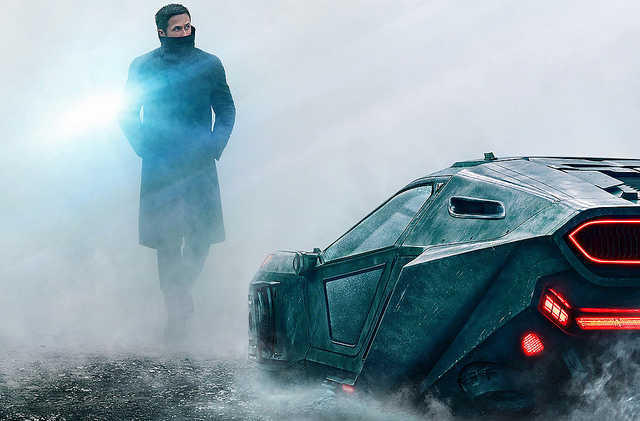
This past weekend, audiences were transported back to the dystopian world of “Blade Runner,” a film originally written by Philip K. Dick and constructed on screen by Ridley Scott in the 1980s.
The neo-noir, sci-fi sequel directed by Denis Villeneuve examines identity and power dynamics between species.
In the U.S. of 2049, there is an illusion of a wall between artificial intelligent androids, or replicants, and humans.
Replicants and humans battled for superiority in the original “Blade Runner” (1982), but after the blackout hits years later, wiping out everyone’s digital footprint, the older replicants lose their power and are being hunted down and “retired” by new obedient replicants, one of whom is Ryan Gosling’s character K.
K, an LAPD cop and blade runner, is tasked to find the old replicants, and is asked “what’s it like to hunt down your own?”
He finds evidence that blurs the lines between replicants and humans, which--not surprisingly--happens to involve the former Blade Runner himself, Rick Deckard (Harrison Ford).
God-like replicant manufacturer Wallace wants to hunt down K and Deckard because they threaten the Tyrell Corporation. In the hunt for original Tyrell androids, Officer K goes down a personal journey where he attempts to reconcile his identity.
“Blade Runner 2049” was unapologetically vague in its promotion of the film, keeping everything from K and Deckard’s relationship to the general narrative under wraps during its entire marketing campaign.
Audiences, like myself, could only speculate the film’s plot and underlying messages before stepping into the theater.
What I was familiar with before the opening credits began rolling was the stunning visuals and technical effects of “Blade Runner 2049.”
Oscar-nominated cinematographer Roger Deakins has a plethora of work under his belt. From “Skyfall” (2012) to “The Big Lebowski” (1998), Deakins creates beautiful worlds, and when paired with Hans Zimmer and Benjamin Wallfisch’s score, “Blade Runner 2049” should get a few nods to a few Academy Awards.
Despite the critical acclaims for “Blade Runner 2049,” it suffered at the box-office compared to other similar “smart” blockbusters released this year.
Many industry experts are confused about the box-office outcome. However, the original “Blade Runner” didn’t perform outstandingly in the 1980s, but rather gained a cult following subsequently which has shaped it into being a revolutionary science-fiction film.
I believe that “Blade Runner 2049” will take a similar shape as its original in American cinema because of its cinematography, score and narrative structure. But only time will tell if “Blade Runner 2049” leaves the same mark as its original.
“Blade Runner 2049” elicits many questions about humanity, life and existence. What makes us human? Can artificial life act and feel like a human?
“Blade Runner 2049” leaves audiences asking these questions narratively, through K’s journey as a blade runner. The film’s narration and its cinematography in dystopian America combine to blur the replicant with the real.
“Blade Runner 2049” is now playing at Ashley Square Cinema.
